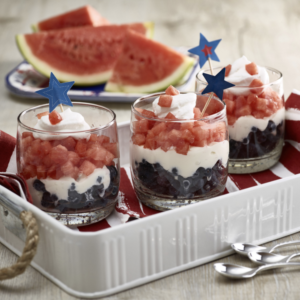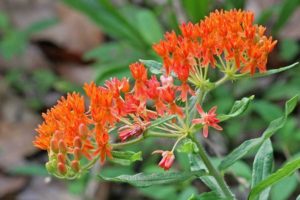Home Insteading With Cooperative Extension (Week 16)
go.ncsu.edu/readext?707099
en Español / em Português
El inglés es el idioma de control de esta página. En la medida en que haya algún conflicto entre la traducción al inglés y la traducción, el inglés prevalece.
Al hacer clic en el enlace de traducción se activa un servicio de traducción gratuito para convertir la página al español. Al igual que con cualquier traducción por Internet, la conversión no es sensible al contexto y puede que no traduzca el texto en su significado original. NC State Extension no garantiza la exactitud del texto traducido. Por favor, tenga en cuenta que algunas aplicaciones y/o servicios pueden no funcionar como se espera cuando se traducen.
Português
Inglês é o idioma de controle desta página. Na medida que haja algum conflito entre o texto original em Inglês e a tradução, o Inglês prevalece.
Ao clicar no link de tradução, um serviço gratuito de tradução será ativado para converter a página para o Português. Como em qualquer tradução pela internet, a conversão não é sensivel ao contexto e pode não ocorrer a tradução para o significado orginal. O serviço de Extensão da Carolina do Norte (NC State Extension) não garante a exatidão do texto traduzido. Por favor, observe que algumas funções ou serviços podem não funcionar como esperado após a tradução.
English
English is the controlling language of this page. To the extent there is any conflict between the English text and the translation, English controls.
Clicking on the translation link activates a free translation service to convert the page to Spanish. As with any Internet translation, the conversion is not context-sensitive and may not translate the text to its original meaning. NC State Extension does not guarantee the accuracy of the translated text. Please note that some applications and/or services may not function as expected when translated.
Collapse ▲4-H at Home
Camaryn Byrum, 4-H Agent
Grilled Berry S’mores
It’s the time of year for families to enjoy weekend camping trips and dinners cooked over the campfire. But no camping trip is complete without s’mores, right? Below is a kid-friendly, quick and easy s’mores recipe with a “berry” sweet surprise.
Ingredients
- Blueberries
- Strawberries
- Large marshmallows
- Milk/dark chocolate
- Graham cracker squares
Directions (begin these steps after fire or grill is ready)
- Slide the blueberries, strawberries, and marshmallows each onto their own skewers.
- Hold the marshmallows over the fire (or grill) until they’re roasted to your preference.
- Place a piece of chocolate on a graham cracker square.
- Hold the strawberry and blueberry skewers over the fire (or grill) for 3-5 minutes.
- Once all ingredients are roasted to your liking, arrange a grilled strawberry and 3-4 grilled blueberries on top of the chocolate covered graham cracker.
- Add two roasted marshmallows, then sandwich with another graham cracker square. Enjoy!
Family and Consumer Sciences at Home
Mary Morris, Family and Consumer Sciences Agent
Watermelon-A Bite of Hydration
We live in the heart of watermelon country. Chowan County grows some of the best watermelon in North Carolina. Did you know that last year Chowan County Commissioners designated June as Rocky Hock Watermelon Month. So go ahead and start looking for our watermelons being sold everywhere. These sweet treats will be showing up all over this month even in Food Lion. Here are some facts about watermelon and why they are so delicious and good for you.
The vine grown Watermelon is 92% water, making it a delicious way to rehydrate. The CDC says that daily fluid intake (total water) is defined as the amount of water consumed from foods, plain drinking water, and other beverages. Water makes up about 60 % of your body weight. The Mayo Clinic explains that water and water-dense fruits and vegetables (like in watermelon) can help replenish your body’s principal chemical component, water. Every cell, tissue, and organ in your body needs water to work properly. If you don’t drink enough water it can lead to dehydration this happens when you don’t have enough water in your body to carry out normal functions. Even if you are mildly dehydrated you can feel drained and tired. Your body depends on water to survive.
You are losing water in many ways throughout the day, your breath, perspiration, urine, and bowel movements. You must replenish water to your system by consuming beverages and foods that contain water.
Watermelon is a nutrient-dense food containing vitamins, minerals, fiber, and many other nutrients including water that are good for you.
Two cups of watermelon has 80 calories, no fat, vitamin A (8%), B6 (6%), and C (25%), potassium (6%), magnesium (6%), thiamin (8%), phosphorus (2%). And who knew that there are 10 grams of protein in one ounce of sprouted, shelled and dried watermelon seeds.
Here’s a fun and healthy watermelon recipe!
Horticulture at Home
Katy Shook, Area Horticulture Agent
Principles of Gardening With Native Plants
From the NC State Extension Gardener Handbook
Landscaping with native plants empowers gardeners to care for nature and enhance the local environment while adding beauty and diversity to their homesites. Native plants still require thoughtful selection and care for long-term success. Choosing species adapted to the site conditions, preparing the soil, and helping plants establish ensures the gardener and the local ecosystem gain the most benefit from including native plants in landscapes.
Choose the Right Plant for the Site – The first step in selecting the right species for the site is performing a site analysis to assess these attributes: soil texture, drainage, and pH; intensity and timing of direct sun and shade during the growing season; and amount of horizontal and vertical growing space. A detailed site analysis helps you choose species adapted to the site’s growing conditions. While plant tags often include sun or shade requirements, soil texture, drainage, and pH are equally important for success. Plants requiring well-drained conditions die quickly in wet areas; wetland plants may adapt to drier sites, but appreciate supplemental watering during dry spells. Choosing the right plant for the site is the most practical, economical, and sustainable approach to plant selection.
Choose Natives Suited for Landscaping – Not all native plants are good candidates for landscaping. Some are too vigorous, producing rhizomes or stolons that quickly dominate smaller planting beds. Some of North Carolina’s most spectacular native plants require very specific soil and moisture conditions not found in most landscapes. This limits their usefulness as landscape plants. To determine if a native species is a good fit for a landscape, consider these factors: Growth habit in relation to available space, including height, width, and if the plant is a vigorous spreader; Adaptability to the growing conditions found in the landscape, including sun or shade exposure, soil type, and drainage; How well the plant fits the purpose for which it is planted; If the plant is commercially available or sustainably propagated.
Prepare the Soil and Help Plants Establish – Even though native plants survive in natural areas without care, this trait does not mean the plants will be able to do the same in a yard—even when you select the right plant for the site. Construction and development alter soil conditions, and almost everyone’s landscape was a construction site at some point. Removal of organic matter and soil compaction are the two most damaging construction-related changes to natural soil conditions. Alleviating soil compaction before planting gives any plant, including native species, the best chance to thrive. Incorporating a 1-inch to 3-inch layer of compost into the soil before planting adds organic matter back to the soil, helps reduce compaction, and restores soil structure. Always test soil before planting to determine if nutrient levels and soil pH are in the appropriate range for the desired plants. If lime or nutrients are recommended, incorporate them into the soil before planting. Amend the soil over the entire planting area rather than amending individual planting holes.
As with all plants, keep newly planted natives well-watered for the first few weeks after planting, or until their roots establish into the surrounding soil. Depending on soil texture, microclimate conditions, and plant species, native plantings may or may not require additional irrigation and fertilization after planting. Plants growing in locations where buildings and hard surfaces interfere with rainfall infiltration are more likely to require additional watering after establishment.
In addition to soil test results, let plant growth and appearance be the guide to determining nutrient needs. If plants are growing at a satisfactory rate and have plenty of healthy green leaves, you do not need to fertilize. Maintaining a 2-inch to 3-inch layer of mulch around plants helps conserve soil moisture, moderates soil temperatures, prevents weeds from self-seeding, and slowly adds organic matter to the soil. In areas where deciduous trees are established, allow leaves to serve as natural mulch by leaving them in place when they fall.
Native plants contribute to the health of the local ecosystem through complex relationships with native insects and wildlife that have evolved over thousands of years. Native plants help create healthy, sustainable, low-maintenance landscapes that are likely to thrive over the long term. Select the right native plants, plant them in the right place, and care for them until the plants are successfully established. That is how gardeners create resilient landscapes capable of surviving the stresses of our variable climate.




 Photo and recipe
Photo and recipe
